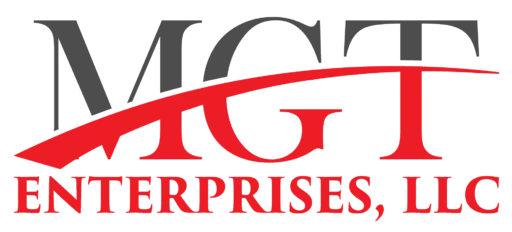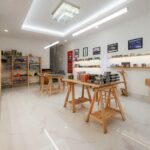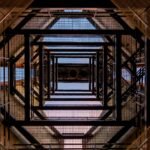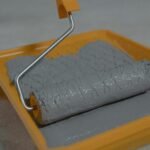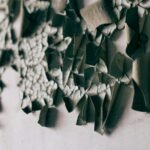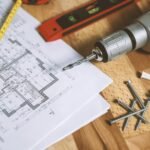When you have to meet tight deadlines, every minute matters, but so does your finishing. That’s when the fast skim coating process comes to the rescue. It’s not only a time-saver; it’s a performance technique for those projects that can’t suffer delays or do-overs.
In commercial projects, reputation frequently rides on efficiency. Commercial skim coat speed depends not so much on skill, but rather intelligent prep, quick-application techniques, and equipment that promotes quick drying without compromising quality. This manual delves into the tricks and equipment that enable crews to achieve perfect finishes even in tight spots.
Why Speed is Important in Commercial Skim Coat Speed
Deadline Pressures
Accelerated construction projects don’t translate to finish quality being compromised. Even when time is constrained, customers continue expecting a perfect Level 5 finish that speaks volumes of professionalism and meticulousness.
When schedules are out of sync or in a hurry, rework is unavoidable. Squandered labor hours and expensive delays have ripple effects on other trades, costing both budget and customer confidence. Smooth coordination and quick skim coating are the secrets to keeping pace without compromising quality.
Hybrid Risks
Hastiness in the interest of speed is usually a self-defeating strategy. Skim coat jobs done in a hurry can result in cracking, bubbling, a lack of adhesion, or uneven texture problems that mean redoing whole walls.
It is therefore essential to reconcile commercial skim coat speed with long-term performance and visual uniformity. An efficient process should never happen at the cost of long-term performance or the professional finish of the project.
Prep Work That Saves Time
Surface Evaluation
Your skim coating procedure is only as fast as your prep allows it. Surfaces with dust, oil, or moisture can ruin the adhesion and slow your work down. With the help of a quick but thorough evaluation, you can identify these problem zones prior to them becoming the cause of delays.
After finishing, the surface prep sets the stage for a simple, smoother, and efficient workflow. Just by investing 10 minutes in a quick inspection, you can avoid hours of touch-ups. Moreover, it is the first step to achieving a fast skim coating process during time-sensitive commercial builds.
Smart Priming
Don’t think of priming as a time-waster, but rather a time-saver. Utilizing bonding primers or PVA on porous substrates allows skim coating to glide evenly. Thus reducing drag and minimizing dry spots.
With the help of the right primer, you can also encourage faster drying, especially in high-resound commercial spaces. Moreover, while underpressure smart priming can speed up your overall procedure without compromising performance. It is a necessary aspect in projects where commercial skim coat speed can make or break your timeline.
Application Techniques That Deliver Maximum Production
Right Tools, Right Passes
Working with wide-blade taping knives, skimming blades, or automatic skimmers means more coverage in fewer strokes. Fewer passes translate to quicker walls—and less wrist fatigue for your team.
In high-speed environments, the equipment can ruin or save the fast skim coating operation. With proper equipment, even large-sized walls can be skimmed in minutes, not hours. Accuracy is better while still being able to preserve the speed essential for success in the commercial sector.
Batch Mixing Efficiency
Pre-measured powder-to-water quantities and high-powered paddle mixers maintain tight consistency and low setup time. Mixing several buckets at the same time eliminates downtime between passes.
Effective batching reduces waiting and allows one crew to apply while another prepares—perfect for commercial skim coat speed. Reduced lag between coats maintains your schedule tight and finishes perfectly. It’s all about establishing a rhythm that works under pressure.
Quality with Limited Time
Intelligent Use
Maintaining a steady fast skim coating under time pressure involves thinking smart and not necessarily faster. One effective strategy is sweeping in alternative directions with every coat. This practice helps to flatten slight ridges and enhance uniformity of coverage.
Include spot sanding between passes to remove bumps before they breed. Edge blending also keeps blatant seams and feather lines from appearing through. All these easy modifications enable crews to maintain high finish quality, whether the clock is ticking hard or not.
Lighting Checks
Even when commercial skim coat speed is the target, stopping for crucial lighting checks can prevent major rework. Pocket side-lighting reveals defects early, before primer traps them in.
Checking in between major coats, particularly in natural lighting or raking light, shows the uneven texture or spots missed. Fixing problems halfway through maintains the last coat perfectly without wasting precious hours on sanding or adjustments once it has dried.
When Speed Isn’t Worth Cutting
Glossy Spaces
High-gloss finishes provide no margin for error. Any small flaw becomes apparent under direct or indirect lighting, particularly in lobbies or offices with glossy interiors. In those environments, slowing down the rapid skim coating process becomes a requirement to fulfill visual quality requirements.
Rapid coats may cut corners in the short term, but threaten surface irregularities that destroy a contractor’s reputation. It’s wiser to lay down every layer carefully, waiting for our complete dry time before moving on. This method achieves a perfect finish that will endure.
Climate Conflicts
HVAC-related conditions, such as excessive humidity or irregular temperatures, can slow drying or cause skim coat failure. Taking shortcuts under such conditions may lead to bubbling or cracking later on, weakening the structure’s finish and durability.
When dealing with commercial skim coat speed, crews need to factor in environment-caused delays in planning. Buffer time allows quality to remain constant, particularly in areas that have unstable weather or inadequate ventilation systems, where consistency of drying is not to be depended upon.
Prep Priority
Irregular surfaces, blistering paint, or residues from prior wallpaper need additional prep prior to any quick-skim coat to be effective. Starting too early results in adhesion issues, irregular texture, or total coat failure.
Although the quick skim coating process provides time advantages, it can’t replace adequate surface preparation. Spending time to clean, repair, and prime walls ensures improved results, particularly in older structures or renovation work where surface conditions are more unpredictable.
Flawless Finish, Faster Timeline
A fast skim coating process doesn’t necessarily need to be quick. To improve your commercial skim coat speed, you will need to implement practices like smart pacing, pro-level tools, and precision prep to achieve tight commercial timelines without cutting corners or compromising your finish.

